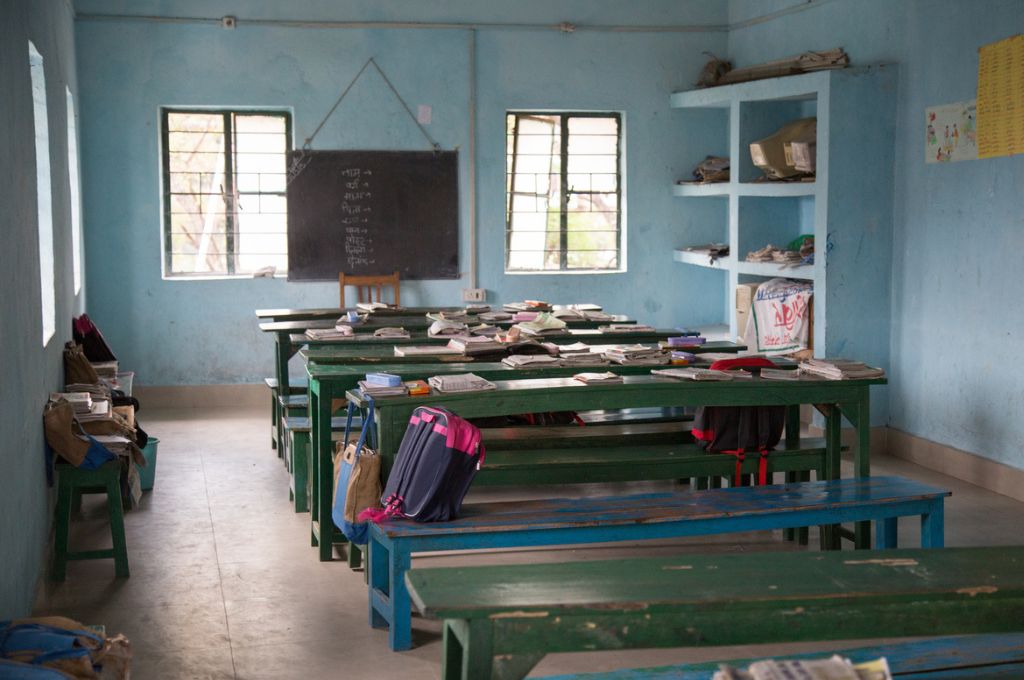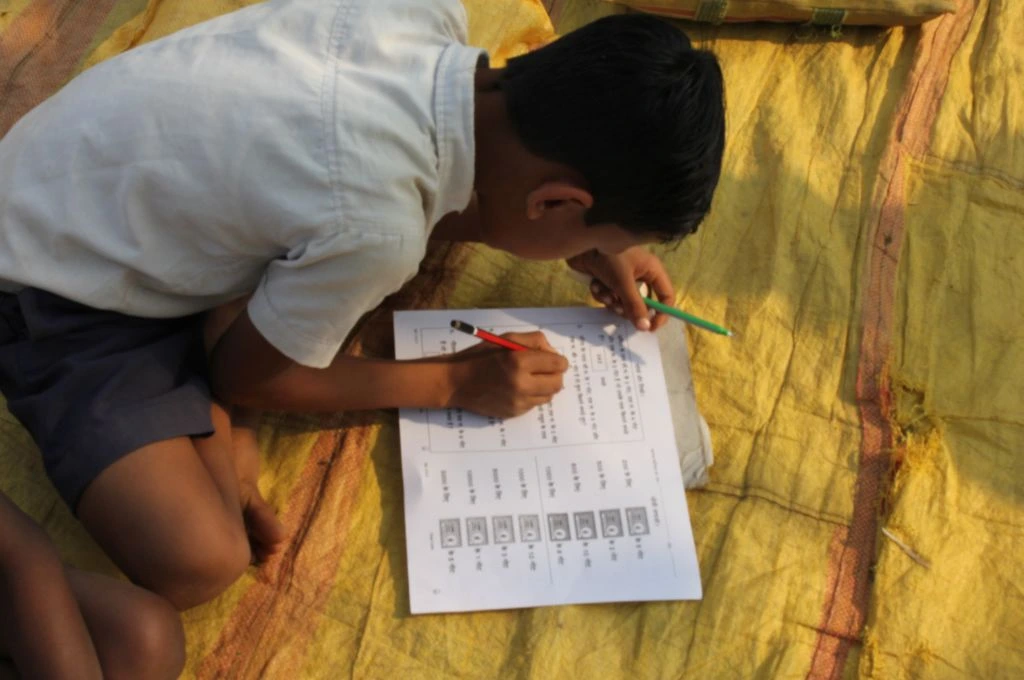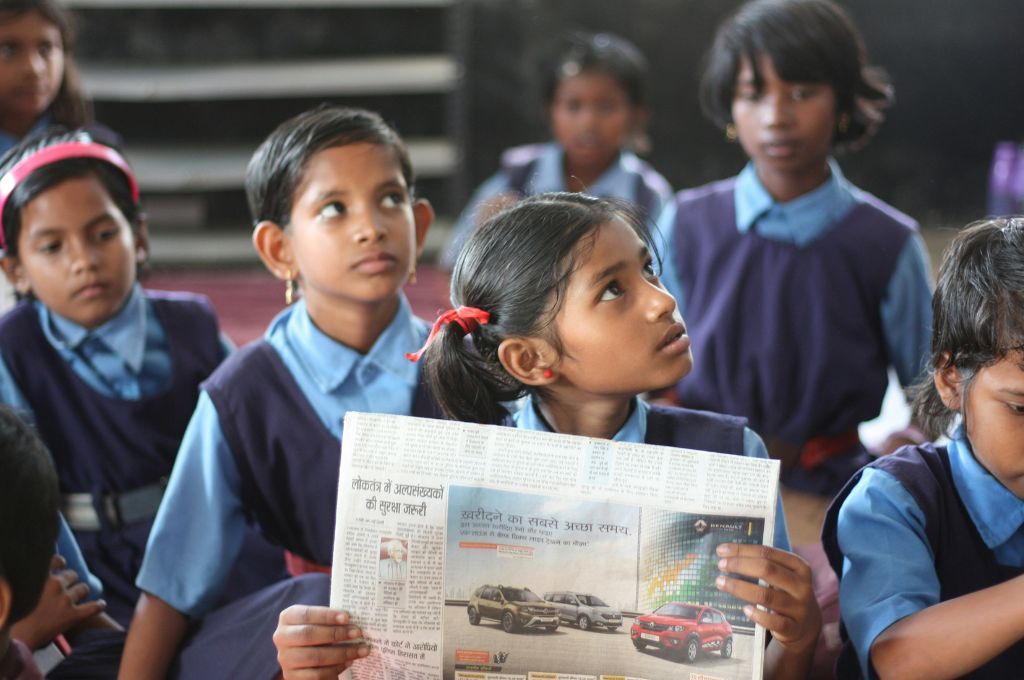COVID-19 has disrupted the traditional ideas of ‘work’ and ‘workplace’. Over the past few years, owing to the uncertainty of the pandemic, companies have shifted to remote or flexible working models. The gig economy has also grown exponentially. Even the nature of work is changing. According to this study, in India, the share of total work hours requiring physical and manual skills will decline, while time devoted to technological skills will rise.
All of this points to the fact that the professional landscape is changing, and changing rapidly. But is our education system evolving as well? Is it preparing children to become a part of these new-age workspaces?
On our podcast ‘On the Contrary by IDR’, host Arun Maira sat down with Atishi Marlena, politician, educator, and activist, and Pramath Raj Sinha, founder of some of India’s leading educational institutions. Drawing on their experiences—Atishi has led the remarkable transformation of government schools in the capital and Pramath has transformed India’s higher education landscape—they reflect on the current state of India’s education system, where the gaps are, and what needs to shift in our curricula to ensure children don’t get left behind.
Below is an edited transcript that provides an overview of the guests’ perspectives on the show.
Public school curricula are outdated, and do not cater to the diversity of students
Atishi: In the last 20–30 years, from the early 90s, a lot of the focus of education policy has been on access and ensuring that all children come to school. We can see [that in] the fact that you have Sarva Shiksha Abhiyan [and] you have state governments, [the] national government pushing for children to come into school. We have all heard those school chalein hum ads coming on radio all across the country. And, yes, that has been successful in the early 90s [when] I think only 60 percent of children of schoolgoing age were actually in school.
Today, that number stands at more than 95 percent, so that has been a success. But while we are getting children into school, the problem is that the children are not learning anything. And our entire teaching methodology, our entire curriculum is designed for the time when 60 percent [of] kids used to come into school. That means when middle classes, relatively affluent people were sending their children into school, and those children, when they entered school, they already knew, they already had access to parents who knew Hindi, parents who knew English, [or] more than one language, having learnt things at home, having opportunities for conversation at home. So many children are coming from educated backgrounds [and] going to school—they need a different curriculum. But when children who are first-generation learners start coming into school, they need a different kind of teaching methodology and curriculum.
The education system needs to focus on equipping students with relevant skills
Atishi: Something which our Indian schooling system has just not recognised [is that] we seem to think that just loading more and more curriculum on to the students is the way to make them learn. And, in fact, it’s exactly the contrary. Research has actually shown that excessive and a lot of curriculum is actually a hindrance to learning…When we started six years ago, when we started doing some of our baseline assessments in our schools, we found that 75 percent children in class 6 could not read their textbooks…So what you effectively had was that under the Right to Education Act, the student came into schools; because of the no-detention policy, they kept on being promoted year after year after year without actually learning anything. And when they reach class nine, which is when the no-detention policy and the Right to Education Act comes to an end, then these children start failing their exams because they actually haven’t learnt anything in the eight to 10 years that they have been in school…I think that is where one of the fundamental flaws is.
[For instance] why do we need to know the minerals in the Chota Nagpur plateau? Has this piece of information really had an impact on the life of anyone who has been through our education system and learnt it?…I think there’s a fundamental need to substantially reduce the content of what we are teaching. Because I think that the process of learning is content agnostic. It does not matter what specific content you teach, whether I teach the history of India, whether I teach the history of Great Britain or I teach the history of Sumatra and Java. What we need for the children to understand when we are teaching history is the process of social change, and how societies change, what brought about that processes change, who were the people who pulled the levers of change? This is what we need them to understand.
So I think that what we really should be looking at is how specific skill sets, be it analytical skill sets, mathematical understanding, be it a comparison, how do you do competitive analysis, all of these things, I think it is the skills and abilities that we need to map and plan for what we want children to understand. And then that can be taught with very limited curriculum and content.
If you want for things to fundamentally change, I think what we need to change is the assessment system.
Second, if you want for things to fundamentally change, I think what we need to change is the assessment system. Because eventually whatever we do, teachers teach to the test. And as they say, it’s the tail that wags the dog, and whatever it is that you’re testing, that is what teachers are going to teach to. And I think unless we change the assessment system, in terms of children, just rote learning and reproducing information in school tests, how we teach in the classroom is not going to change.
We need stronger measures to assess and accredit educational institutes, especially for higher education
Pramath: Even if you look at individual institutions—take the best of our Indian institutions—I think we are so far behind compared to where we should be and can be that I would suggest that, for now, it would be okay to use those [global rankings of institutions] measures. Because you know what, it’s a good aspiration to have, even if you debate those measures, whether it is some standard score, because the measures have been thought through—no particular index is perfect. But you know, at the end of the day, they measure the same thing: student satisfaction, learning, employability, quality of faculty, research, and so on…So I think that I would say that it’s okay to impose whatever measure people feel like worth imposing because that’s the only way to push us to get to the next level. That being said, how do you measure? I think measurement is really in three ways, right? It’s how well your students are doing in terms of outcomes. Or what is the quality of the impact that your faculty is having, those that are doing research? What is the quality of their research? And what is the quality of their teaching, as measured by feedback from students? And then, overall, how is the impact your institution is having on the world?…Now, I think on the third one, we don’t measure it almost at all in our country.
There aren’t enough evaluators to evaluate.
And the last thing I’ll say is that this is a solved problem around the world. We don’t have to reinvent the wheel. Around the world, issues of quality, equity, access have been solved for, and there are multiple models. All we have to do is adopt them. But we actually haven’t adopted any model well enough. For example, the only way we measure outcomes in higher education is through the accreditation body called NAAC [National Assessment and Accreditation Council]. And the fact is that NAAC is overwhelmed with a large number of institutions that it has to accredit. There aren’t enough evaluators to evaluate. And, you know, if you look at accreditation bodies around the world…they all have this outcome-based accreditation system. It’s a solved problem…And we need to adopt one of these and do them well.

Learning is a lifelong process that goes beyond what is taught in textbooks
Pramath: The motivation is [to] teach me a particular skill, and that there’s a job waiting for me. And it’s difficult to impress upon people that while that may be the case in the short term, the big thing that will make you successful is really learning how to learn over a period of time…The only way that you will learn how to learn is by trying out different things, because the more you put yourself in situations that are unfamiliar, each time you have to learn something new that you are not trained in, that you did not have expertise in, did not experience, and you didn’t have education [for]. And that’s the only way to really learn the meta skill, if you will, of being able to quickly get up to speed on a new subject that has been thrown at you or if you’ve been pushed off the deep end into a completely new industry or a new sector or the sector you worked in got completely shut down and disrupted.…one of the important things to learn is that pedagogy, which is the learning of young students or [the teaching that happens] in school, is very different from andragogy, which is adult learning.
And in adult learning, unlearning what you have learnt is as important as relearning or upskilling. So starting from a mindset that you are starting afresh is very important in reskilling, and having this mindset of learning constantly through your life to say, for a moment, I’m going to suspend all knowledge and start afresh. I joined McKinsey when I was 29 years old, having done a PhD, and having been an academic in a very nerdy field like robotics, when I joined management consulting. I had no idea of business…Nobody had taught me. I didn’t understand cash flows—I was completely at sea…So you have to constantly start afresh.
Atishi: I think this is something we need to understand that values and ethics are not going to be taught by us having a textbook for values and ethics. Number one, values and ethics are going to be taught by how it is that we are actually living our lives, as teachers, as parents, as adults. And one of the interesting things that we have seen in our own schools is that earlier there used to be a lot of problem with children breaking school infrastructure. And if you would ever go to a government school, what you would find is that the fan blades would be turned up and the fan would become like a flower, and children would scratch on desks, make graffiti on walls. And now it’s not as if the children in the schools have changed. It’s the same children, it’s the same teachers. But I think today none of this happens for two–three reasons. One, we have overhauled the school infrastructure—schools are cleaner, they are nice-looking, there’s good environment as schools are kept clean [with] big windows and nice desks. So when a child came into the school earlier, came into a ramshackle run-down government establishment, the message that was being given by that school to the child was that you are a second-grade citizen and you don’t matter in the world, and you’re not going to make it anywhere in the world.
Today when they enter a school and their school looks as good, or sometimes even better than the private schools in their locality, then that same child walks into a school with their head held high. So it’s the same child coming from probably the same low-income localities, which was seen as the reason for why children used to behave the way that they used to do. And you have the same children who are managing school infrastructure…I think this is how we are going to teach our children values.
How we as a system treat the teachers, the teacher is going to treat the students.
Second, one of the things you realise in the system is that all government establishments treat teachers very badly. And how we as a system treat the teachers, the teacher is going to treat the students. So the minute we as a system treat our teachers with dignity and respect, and we create an environment where they feel safe, where they feel respected and recognised if they do good work, then that is the environment that they will create with the students in their classroom. If we are constantly berating teachers…then that is how they also behave with students in the classroom.
Number three, I think in terms of actually values and ethics, what we do need to do is create spaces in our learning time where children can begin to reflect on some of these things…anyone who has seen children of that age, of schoolgoing age, and during their teenage years if you try and teach children values and ethics or moral science, as they call it, whatever you tell them to do, they are going to do exactly the opposite of that, whatever it is. And so, consequently, we should all recognise the absolute futility of trying to tell children what to do, because they’re not going to do it.
I think what you have to do is create spaces where they can explore their own behaviour. So one of the things that we have done in Delhi government schools, we started something called the happiness curriculum, where [for] children from nursery to grade 8, the first class of the day is something called the happiness class, which starts with five to seven minutes of mindfulness practice, where children actually sort of calm down, they meditate. And the second thing that we do then is that we create situations where children can reflect, so we will give them a role play or a life situation. And then ask them if you were in that situation, what would you do?…And I think that really is the crucial thing that if we can begin to make children reflect on their behaviour, on their actions, I think that is the only way that we can begin to teach; I don’t even think the word is teach, but I think begin to put them on the path of greater reflectiveness about their own actions, behaviour, ethics. Not that it’s not important; I think it’s extremely crucial. But we have to be aware that our current methods don’t actually work.
Listen to the full episode here.
—
Know more
1. Read this article to understand the problems with standardised testing in India.
2. Read this paper to learn more about how the Indian education system can offer a more holistic learning experience to children.
3. Learn more about India’s deteriorating learning outcomes here.





